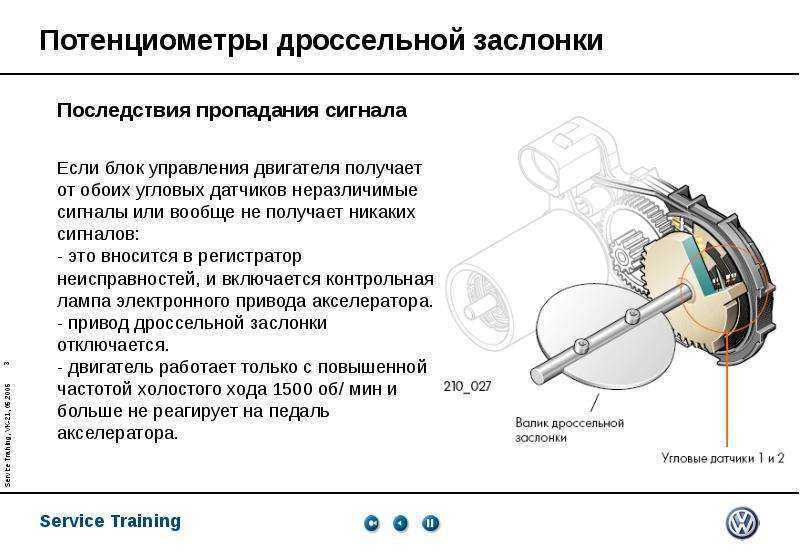
P069F Throttle actuator control lamp control circuit
Content
- P069F Throttle actuator control lamp control circuit
- OBD-II DTC Datasheet
- What does this mean?
- What is the severity of this DTC?
- What are some of the symptoms of the code?
- What are some of the common causes for the code?
- What are some steps to troubleshoot the P069F?
- Related DTC discussions
- Need more help with your P069F code?
P069F Throttle actuator control lamp control circuit
OBD-II DTC Datasheet
Throttle Actuator Indicator Lamp Control Circuit
What does this mean?
This is a generic Diagnostic Trouble Code (DTC) applicable to many OBD-II vehicles (1996 and newer). This may include, but is not limited to, Chevrolet, Chrysler, Dodge, Ford, GMC, Hyundai, Kia, Honda, Toyota, etc. Despite the general nature, the exact repair steps may vary depending on the model year, brand, transmission models and configurations.
A stored code P069F means that the powertrain control module (PCM) has detected a malfunction in the control lamp control circuit of the throttle actuator.
The throttle control indicator lamp is an integral part of the instrument panel. Its main function is to warn the driver of a malfunction in the throttle actuator control system (when it is lit). The throttle actuator control system is responsible for opening and closing the throttle to increase/decrease engine RPM as required.
The PCM normally monitors the throttle actuator test lamp control circuit for continuity whenever the ignition is turned on. The throttle actuator control system uses inputs from the vehicle's throttle position (TPS) sensor to actuate the throttle valve and regulate the appropriate amount of ambient air to the engine. The PCM supplies the electronic servomotors with a voltage signal required to open or close the throttle valve as required.
Each time the ignition is turned on and power is applied to the PCM, several controller self-tests are performed. In addition to performing a self test on the internal controller, the Controller Area Network (CAN) transmits serial data from each individual module to ensure that the onboard controllers are communicating as expected.
If a problem is detected while monitoring the throttle actuator warning lamp control circuit, a P069F code will be stored and a malfunction indicator lamp (MIL) may illuminate.

What is the severity of this DTC?
A stored code P069F (with throttle actuator warning lamp illuminated) is likely to be accompanied by a loss of throttle control. This code should be considered serious and diagnosed as soon as possible.
What are some of the symptoms of the code?
Symptoms of a P069F trouble code may include:
- The throttle actuator control system does not work
- Throttle actuator warning lamp is off
- Throttle actuator warning lamp is on
- Other Stored Throttle System Codes
What are some of the common causes for the code?
Reasons for this code may include:
- Defective PCM
- PCM programming error
- Open or short circuit in the control circuit of the control lamp of the actuator of the throttle valve
- The lamp of a control lamp of a drive of a throttle valve is faulty
What are some steps to troubleshoot the P069F?
To diagnose the P069F code, you will need a diagnostic scanner, a digital volt / ohmmeter (DVOM), and a reliable vehicle information source.
Consult your vehicle information source for technical service bulletins (TSBs) that reproduce the stored code, vehicle (year, make, model and engine) and symptoms detected. If you find an appropriate TSB, it can provide useful diagnostic information.
Start by connecting the scanner to the vehicle's diagnostic port and retrieving all stored codes and freeze frame data. You will want to write this information down just in case the code turns out to be intermittent. After recording all relevant information, clear the codes and test drive the vehicle until the code is cleared or the PCM enters standby mode.
If the PCM enters ready mode, the code is intermittent and harder to diagnose. The condition that led to the persistence of P069F may need to worsen before an accurate diagnosis can be made. If the code is cleared, continue diagnostics.
Use your vehicle information source to obtain connector views, connector pinouts, component locators, wiring diagrams, and diagnostic block diagrams relevant to the code and vehicle in question.
Check for battery voltage on the THC warning lamp circuit using the appropriate wiring diagram and your DVOM. If not, check system fuses and relays and replace defective parts if necessary. If voltage is detected at the throttle control indicator lamp, it can be assumed that the throttle control indicator lamp is defective.
If the throttle actuator control indicator lamp is functioning properly and P069F continues to reset, use the DVOM to test the controller power supply fuses and relays. Replace blown fuses if necessary. Fuses should be checked with a loaded circuit.
If all fuses and relays are working properly, a visual inspection of the wiring and harnesses associated with the controller should be performed. You will also want to check the chassis and motor ground connections. Use your vehicle information source to obtain grounding locations for associated circuits.
Visually inspect the system controllers for damage caused by water, heat, or collision. Any controller damaged, especially by water, is considered defective.
If the power and ground circuits of the controller are intact, suspect a faulty controller or a controller programming error. Replacing the controller will require reprogramming. In some cases, you can purchase reprogrammed controllers from the aftermarket. Other vehicles / controllers will require onboard reprogramming, which can only be done through a dealership or other qualified source.
- If the throttle actuator warning lamp does not come on with the ignition OFF (KOEO), suspect that the warning lamp warning lamp is defective.
- Check the ground integrity of the controller by connecting the negative test lead of the DVOM to ground and the positive test lead to the battery voltage.
Related DTC discussions
- There are currently no related topics in our forums. Post a new topic on the forum now.
Need more help with your P069F code?
If you still need help with the P069F error code, post a question in the comments below this article.
NOTE. This information is provided for informational purposes only. It is not intended to be used as a repair recommendation and we are not responsible for any action you take on any vehicle. All information on this site is protected by copyright.
